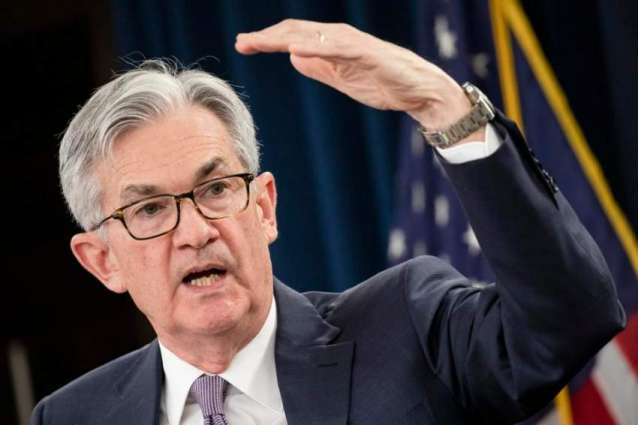US interest rates need to stay high for "a few years" to meaningfully bring down inflation, Federal Reserve Bank for New York President John Williams said on Wednesday
WASHINGTON (Pakistan Point News / Sputnik - 08th February, 2023) US interest rates need to stay high for "a few years" to meaningfully bring down inflation, Federal Reserve Bank for New York President John Williams said on Wednesday.
"To me, the important thing is we need a sufficiently restrictive stance, we need to retain a sufficiently restrictive stance of policy, we're going to need to maintain that for a few years to make sure we get inflation to 2%, then eventually we'll get interest rates presumably back to more normal levels," Williams said.
The Fed has increased interest rates by 450 basis points over the past year, taking them to a peak of 4.75% from 0.25% after the COVID-19 outbreak in March 2020.
The US central bank began with a modest 25 basis point hike in March 2022, dialing it upwards to 50 basis points the next month before embarking on four 75-basis point increases between June and November as inflation hit four-decade highs. The Fed slowed its pace of monetary tightening thereafter, returning to a 50-basis point hike in December and a 25-basis point increase this month.
The Fed's main guide for decisions on interest rates has been the monthly non-farm payrolls (NFP) report released by the US Labor Department. The labor market has been the juggernaut of US economic recovery from the effects of the pandemic measures, with hundreds of thousands of jobs being added without fail since June 2020 to make up for the initial loss of 20 million jobs. Average monthly wages have also grown since May 2021. The Fed has identified jobs and wage growth as the principal drivers of inflation.
While the central bank has tried to keep pace with the NFP reports to set interest rate hikes accordingly, the jobs data sometimes lands after the Fed's scheduled monthly meeting on rates. Case in point was February's modest rate hike of 25 basis points - compared with December's 50-basis points - when the Labor Department belatedly reported that jobs grew to 517,000 from 260,000 in the previous month.
Fed Chairman Jerome Powell said this week that the February jobs data has not made the central bank's job of fighting inflation any easier.
But Powell also said the Fed wanted to give disinflation, which has just begun, a chance to work, instead of just resorting to higher interest rates.
"If strong labor market reports or higher inflation reports continue, the Fed may need to raise rates more than is currently priced in," Powell said on Tuesday. "Disinflation has begun but it has a long way to go. This process is likely to take quite a bit of time, it's likely to be bumpy, not smooth."
Inflation, as measured by the Consumer Price Index grew at 6.5% per year - the slowest rate since October 2021. Still, that was more than three times the Fed's target of 2% per year.
Powell also said it might be well into 2024 for the Fed to get inflation back to 2% per year - a target the central bank has held for a quarter century and which he described as a "global benchmark."
"It will almost certainly take until next year to get down to 2%," Powell said.
The Fed's next decision on rates will be on March 16, well after the release of the February NFP report on March 3.
Should there be another round of heady jobs growth this month then the Fed will almost certainly be rethinking the merits of continuing with February's 25-basis point hike, analysts who see a potential return to December's 50-basis point increase said.
The New York Fed appeared to agree with Powell, with Williams saying a 25-basis increase "seems like the right size to adjust policy."
"I think these 25-basis point steps allow us both to adjust policy based on the new information and what's going on, and get us to our goal," Williams added, noting that the central bank could move more quickly if the economic situation changed.




